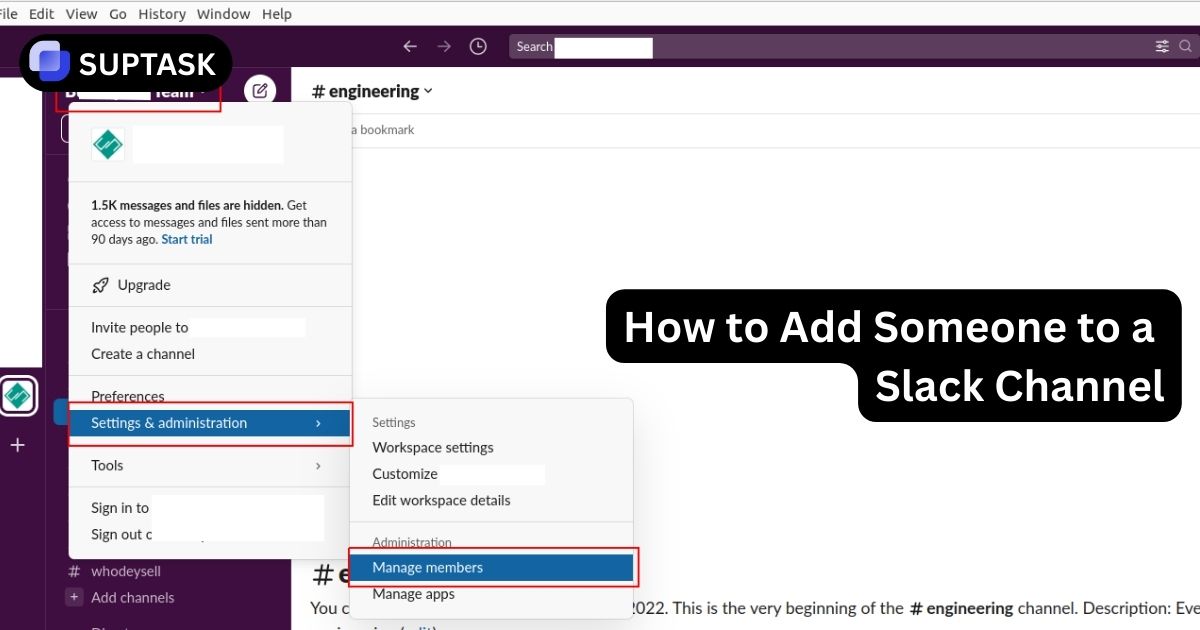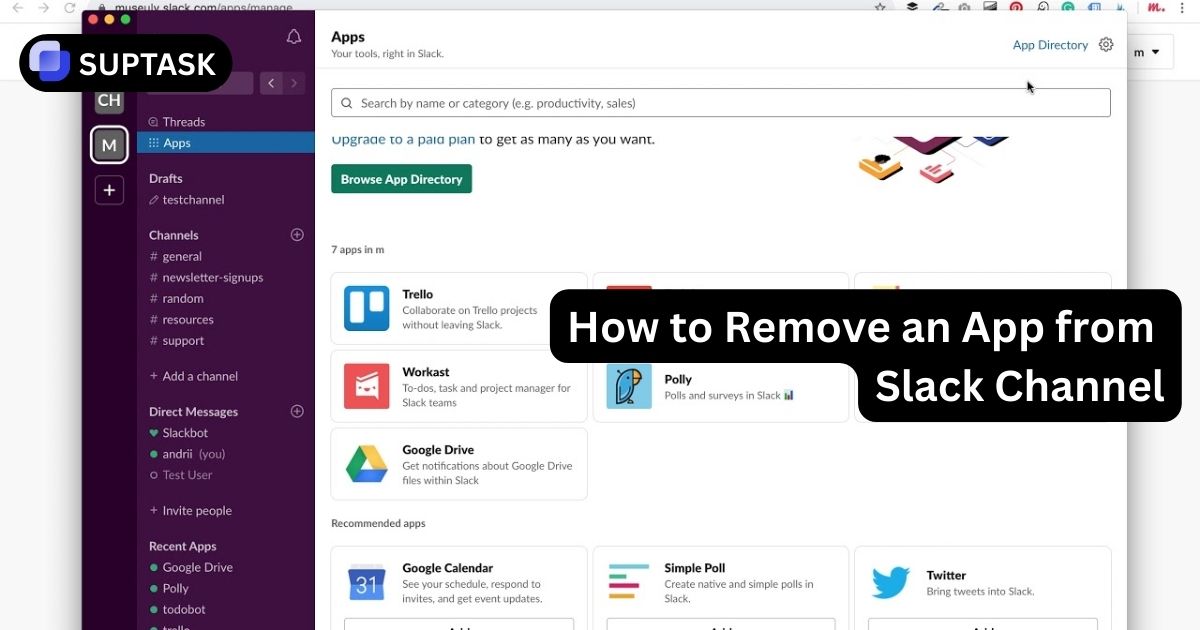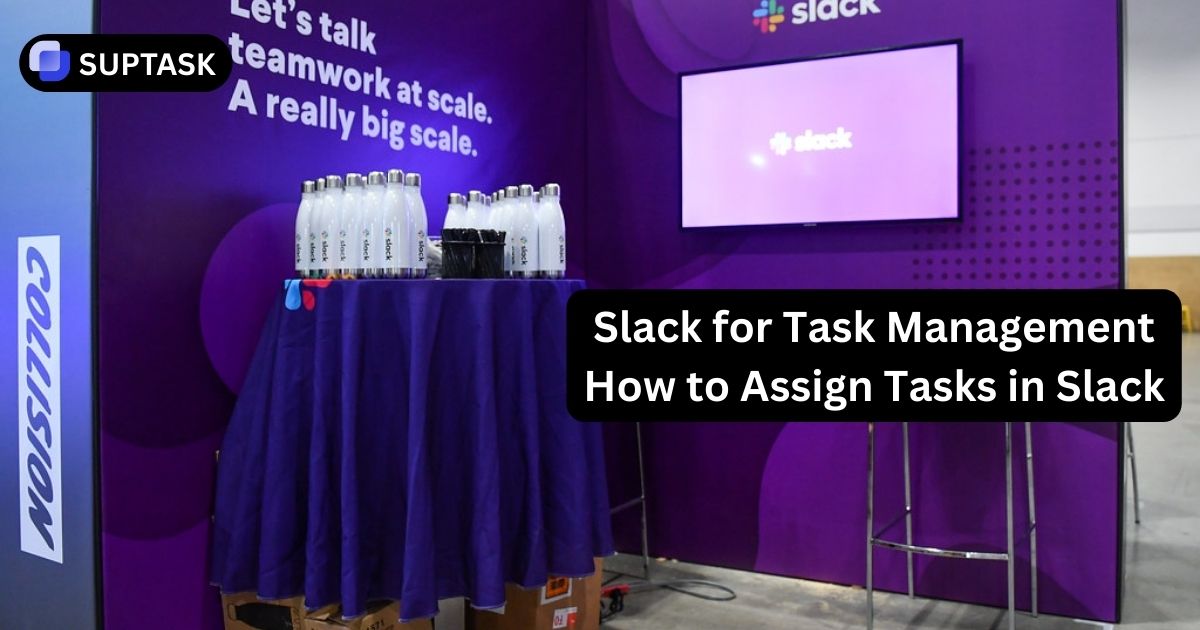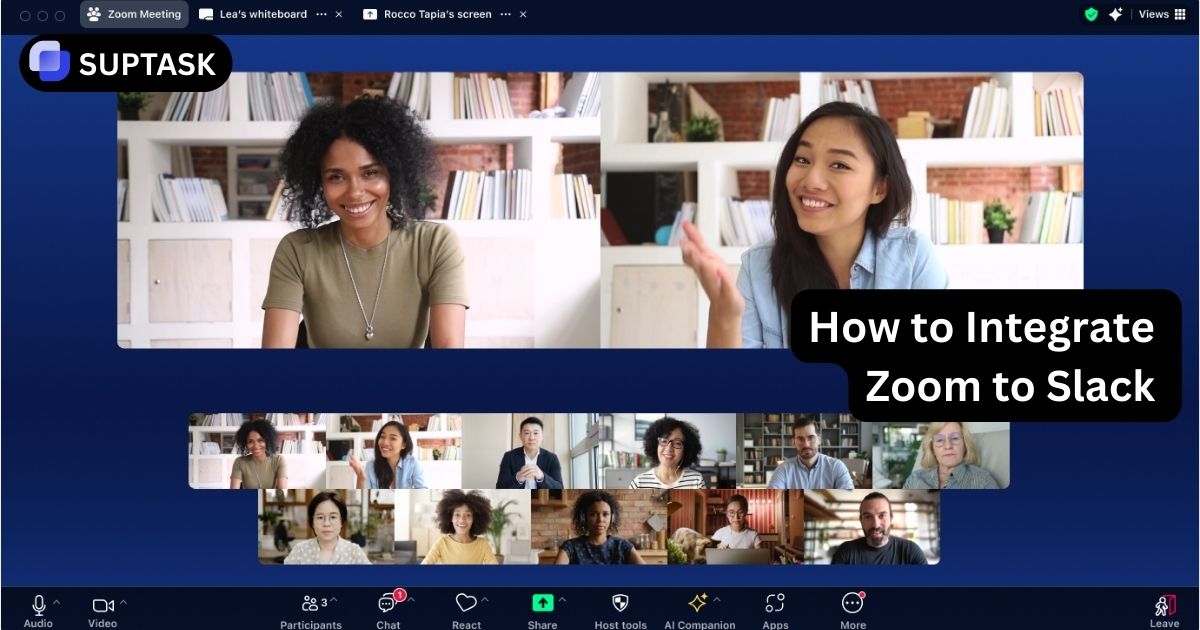In search of a cost-free Slack alternative that doesn’t skimp on effectiveness? You need a tool that empowers team communication and meshes with daily workflows at zero expense.
This guide unpacks leading free Slack alternatives that deliver on performance, offering the essentials in communication features and integration without the price tag.
Discover the platforms to keep your team connected, productive, and risk-free.
Key Takeaways
- Free Slack alternatives offer cost-effective solutions for collaborative communication, with features often matching or exceeding those of Slack, suitable for budget-conscious small to medium-sized businesses.
- Alternatives like Microsoft Teams, Google Chat, and Rocket.Chat provide unique advantages such as seamless integration with office suites, comprehensive communication features, and open-source flexibility, fitting various organizational needs.
- Each alternative platform, from Chanty’s user-friendly task management to Lark’s multilingual collaboration environment, emphasizes specific strengths like user interface simplicity, task and project management integration, or creative communication tools.
Why Choose a Free Slack Alternative
As companies grow and budgets tighten, there’s a growing need for cost-effective communication tools.
Why invest in a premium tool when a free alternative could provide comparable features? Free Slack alternatives, offering key collaborative features, are cost-effective, especially for smaller businesses and startups.
A free Slack alternative can lead to substantial cost savings, especially for growing companies operating on tight budgets and need functionalities like halp ticketing and communication.
This positions it as an optimal choice for affordable collaboration tools. Exploring Slack alternatives could be an uncomplicated yet potent strategy to maximize your resources, particularly when integrating additional tools that allow Slack tickets such as Suptask.
1. Microsoft Teams

Microsoft Teams is a sturdy, comprehensive collaboration platform that seamlessly integrates with Office 365.
This seamless integration enables file sharing, chatting, and project collaboration without incurring extra costs. For businesses already leveraging Office 365, Microsoft Teams emerges as a handy and economical Slack substitute.
Additionally, Microsoft Teams offers a variety of video conferencing layouts in its free plan. Whether planning a small team gathering or a more significant conference, the platform’s Gallery supports up to nine streams and Large Gallery up to 49, with meetings accommodating up to 100 participants for a duration of 60 minutes.
From a security perspective, Microsoft Teams safeguards communication by encrypting meetings, chats, calls, and files.
Each user enjoys 5 GB of cloud storage, enhancing the convenience of this all-inclusive collaboration platform.
2. Google Chat

Google Chat is a versatile app that integrates seamlessly with Google Workspace tools like Gmail, Google Calendar, Google Drive, and Meet.
This integration means you can access Google Chat across browsers, mobile devices, and even as a standalone desktop app. The app offers several features to improve conversation organization and manage clutter, including:
- Quoting in group chats
- Read receipts
- Message editing and deletion
- Smart compose
- Direct linking to text
- Hiding inactive chats
For ongoing team collaboration, Google Chat provides the following features:
- Unique spaces to chat, share files, assign tasks, and review message history
- Accommodation for over 500,000 members
- Integration with external services like Asana and Zapier
- Robust security features, including phishing and malware detection
- Data Loss Prevention (DLP) to shield users from spam, malicious content, and sensitive data mishandling.
3. Rocket.Chat

Rocket.Chat is an open-source platform with over 12 million users in over 150 countries. It was developed by a community of over 1000 contributors. Chat’s open-source nature aligns with modern web and cloud solutions trends.
What sets Rocket.Chat apart is its commitment to transparency. The platform’s features include:
- Fully transparent source code
- Same versions on-premises as in the public GitHub repository
- Reliability attributed to the sheer number of contributing experts
Moreover, Rocket.Chat operates under an MIT license, allowing extensive flexibility in developing additional features and not imposing copyleft on customers’ internally created products.
4. Chanty

Chanty focuses on a non-tech-savvy audience with its user-friendly interface. The platform offers an intuitive Teambook for organizing files, links, tasks, and conversations. This feature makes it easier for teams to keep track of their work and collaborate at maximum efficiency.
Moreover, Chanty offers the following features as a team chat app:
- Built-in task manager to create, manage, and filter tasks and start task discussions with a single click. This facility supports up to 5 team members under the free plan.
- Seamless integration with numerous third-party apps to streamline notifications, track progress, and automate tasks within the team chat.
- Video conferencing facilities that support up to 1000 participants with features like screen sharing make it a comprehensive workplace chat software alternative.
5. Pumble

Pumble sets itself apart by offering unlimited message history in its free version. This feature ensures that teams can always reference past conversations without limitations.
Plus, each Pumble workspace benefits from 10GB of free storage, allowing teams to exchange and store files without concerns about space for an extended period.
Pumble’s pricing model begins with a free basic plan, escalating to a moderate $6.99 per user per month. This makes Pumble an economical Slack alternative for budget-aware teams.
Moreover, switching from Slack to Pumble is streamlined thanks to the ability to import data directly from Slack, facilitating a smooth team transition.
6. Flock

Flock’s interface is much easier to navigate than Slack’s, focusing on open chats, hidden channels, and direct messages.
This design, coupled with easy access to to-do lists and other productivity tools like built-in polls, reminders, and notes, makes it a user-friendly team communication tool.
Flock enhances team collaboration with features like direct chat, group conversations, and Smart Channels for automatic team inclusion.
It also supports audio conferencing with phone participation via a pin and video conferencing, complete with screen sharing, making it a solid Slack alternative.
7. Ryver

Ryver combines versatile team communication with tasks and incident management features. Its task management system allows for:
- The creation and assignment of individual tasks
- Relevant file sharing and communication within the task
- Visual Kanban boards for project workflow visualization
These features make Ryver a powerful tool for managing tasks and projects.
In terms of communication, Ryver offers the following features through public and private channels:
- Open forums for general discussions
- Remote teams for confidential conversations
- Direct messaging for personal interactions
- Comprehensive voice and video call functions, supporting both group and one-on-one calls with screen-sharing capabilities
These features make Ryver a versatile and comprehensive communication platform.
8. Twist

Twist prioritizes structured communication through threads, encouraging asynchronous work by not displaying online presence indicators.
This approach reduces the pressure to be constantly connected and responsive, promoting productivity over presence through messages with style and clarity.
The platform encourages longer, more thought-out messages and aims to reduce digital stress and the fear of missing out by providing a calm messaging environment.
This means only some messages must be read immediately, reducing the pressure on team members.
Customers who have switched from Slack to Twist have found that keeping conversations in threads helps them stay more organized and makes past conversations easily referenced.
This feature has benefited distributed teams globally, helping them feel closer and more connected despite different locations.
9. Zoho Cliq

Zoho Cliq is a multifaceted team communication tool that encompasses:
- Instant messaging for quick chats
- Email correspondence
- Scheduling and conducting meetings
- Calendar management
- An array of additional productivity-enhancing tools
It integrates seamlessly with over 40 Zoho applications. To provide compatibility with more than 450 third-party apps, ensuring an extensive suite for team collaboration.
Zoho Cliq differentiates itself as an economical Slack alternative by offering features such as generous storage space—100 GB per user—and complimentary Active Directory synchronization.
The transition from Slack to Zoho Cliq is smooth and uninterrupted, facilitated by a specialized migration tool to preserve workflow integrity.
10. Spike

Spike consolidates team communication and collaboration into a single space, providing a unified feed for:
- Chat
- Collaborative documents
- Groups
- Emails
This eliminates the need to switch between different applications, enhancing team productivity.
What sets Spike apart is its Magic AI feature. This integrated feature is an all-in-one AI assistant for emails, replies, brainstorming, notes, etc.
It also allows users to connect their email domain or obtain one through the service, helping to maintain professional and on-brand communication.
A study cited by Spike suggests that businesses adopting a unified communications experience may see a 52% increase in productivity and a 25% increase in operating profit.
This implies that switching to a unified platform like Spike could result in substantial productivity gains and business cost savings.
11. Hive

Hive, a comprehensive project management tool, combines chat and project management capabilities for an all-in-one collaboration solution. It allows users to:
- Streamline project activity through sprints and agile scoring
- Weigh task and project importance
- Allocate resources
- Track team availability
The platform offers the following features:
- Centralizes project documents, images, videos, and other resources
- Provides markup capabilities and approval request features
- Allows users to centralize client or product intake with Hive Forms, which can be filled into projects and tasks or assigned to teammates.
Hive includes the following features:
- Automation features for everyday tasks
- App syncing without requiring coding knowledge
- Data analysis across all submitted timesheets over a specific time period
- The ability to export relevant information
This makes this a good thing. Have a comprehensive workplace chat software.
12. Lark

Lark offers a centralized workspace for teams to communicate, collaborate, and access resources.
The platform provides a combination of instant messaging with emails, meetings, calendars, and various other productivity tools, providing a unified workspace for teams.
The platform promotes ‘creativity as the new productivity,’ encouraging teams to let ideas flow freely within the chat environment. It includes a feature called Magic Share, which enhances collaborative creativity.
Real-time document collaboration is supported in Lark, with a rich template library for users to work together efficiently.
The app provides multilingual auto-translation, facilitating seamless cooperation between global and hybrid teams.
Lark’s work management tools include an inter-relational database named Base, designed to minimize coordination time and enhance creative work.
13. Zoom

Zoom is a popular choice for video conferencing and video chat. It incorporates an asynchronous chat platform with features like @mentions, slash commands, and file uploads, enabling collaboration and communication within the platform.
Additionally, Zoom supports audio and video calls, making it a versatile tool for remote teams.
Zoom’s chat functionality includes features like file sharing, screen capture, and animated GIFs, but it may not be as comprehensive as Slack’s messaging-centric approach.
However, it does offer the advantage of breakout rooms in video calls, which can be used to split larger meetings into smaller discussion groups, a feature not native to Slack’s offerings.
Regarding security, Zoom encrypts all audio, video, and screen-sharing data and has invested in a more robust security strategy to protect user data.
Its pricing plans offer different levels of service based on the needs of businesses, including a free basic plan with a 40-minute limit on group meetings and more comprehensive paid plans for larger organizations.
FAQ
Is there a free app like Slack?
Certainly, Chanty and Pumble stand out as complementary substitutes to Slack that offer similar functionalities while imposing no restrictions on accessing the history of messages.
Is there a Google equivalent to Slack?
Yes, Google Chat is a great alternative to Slack, offering similar features and integration with other Google products.
Can I use Microsoft Teams for free?
Indeed, Microsoft is a Microsoft product. Teams is available at no cost and provide a variety of video conferencing designs along with secure messaging capabilities.
Does Zoom only offer video conferencing?
No, Zoom offers more than just video conferencing. It also includes an asynchronous chat platform with features such as @mentions, slash commands, and file uploads.













